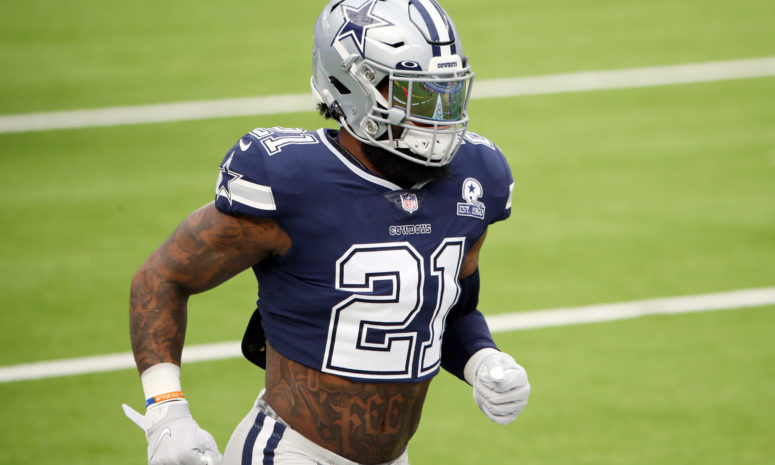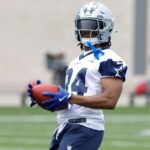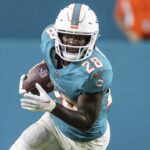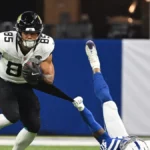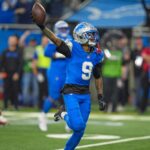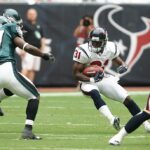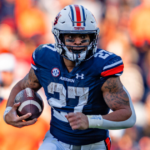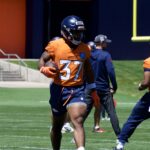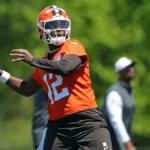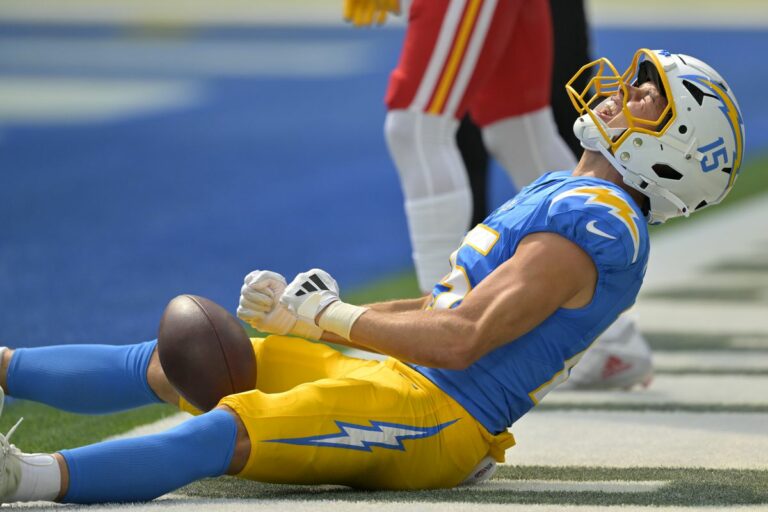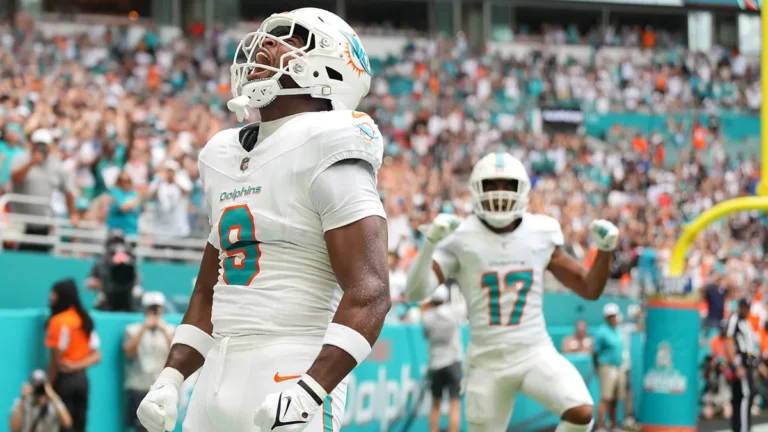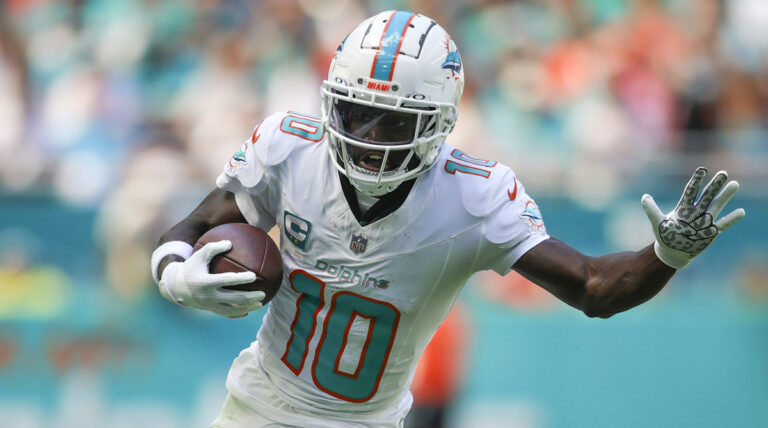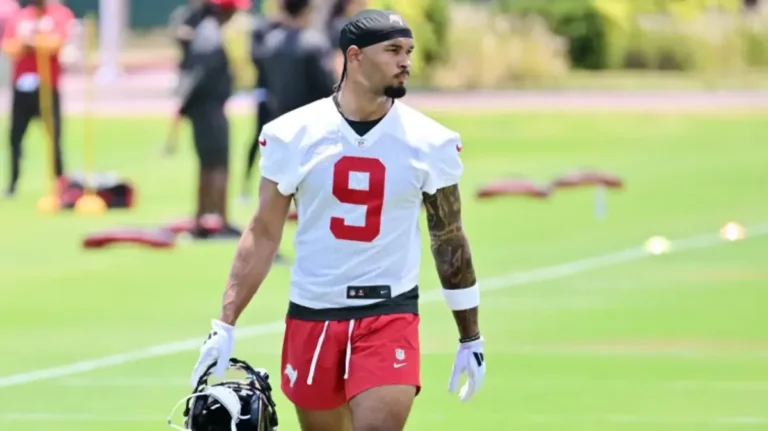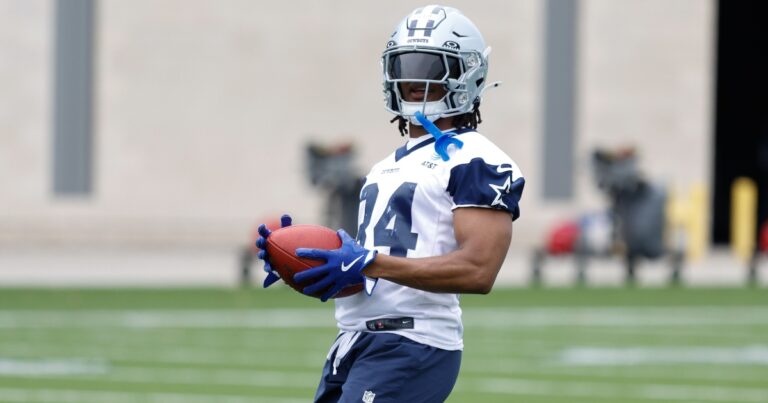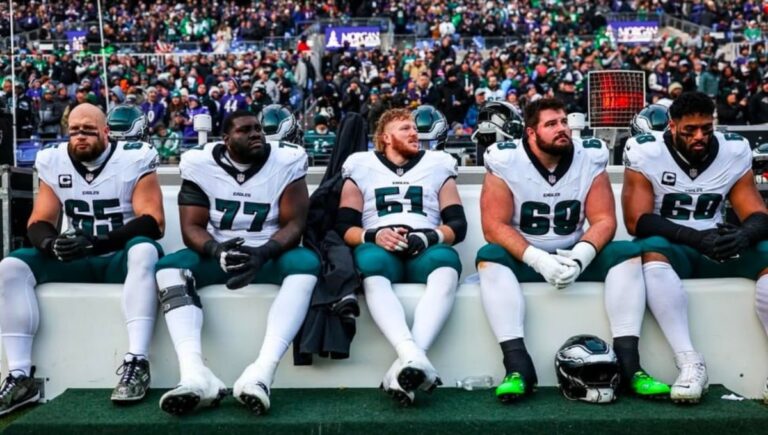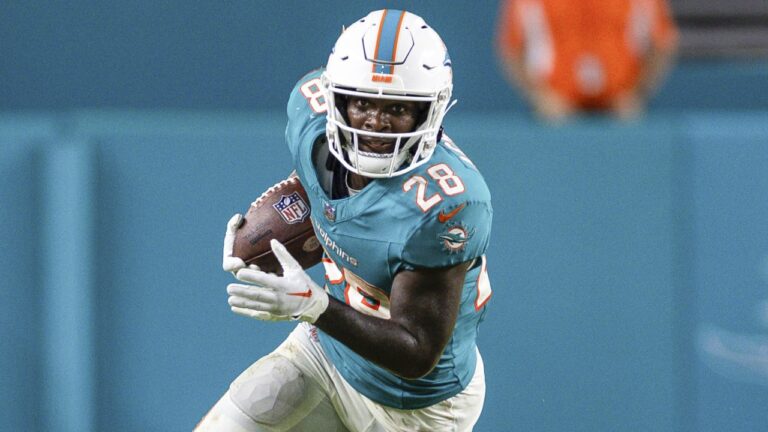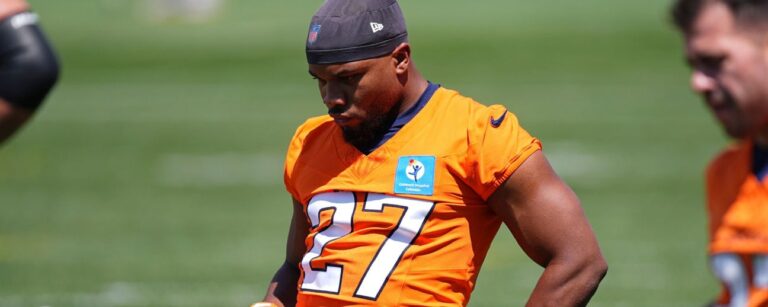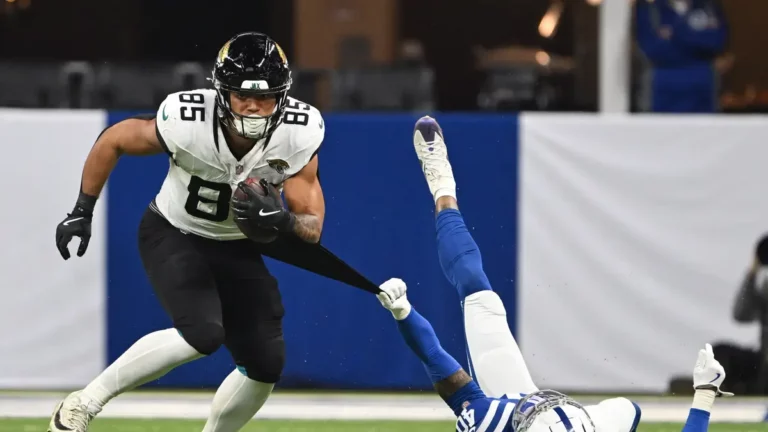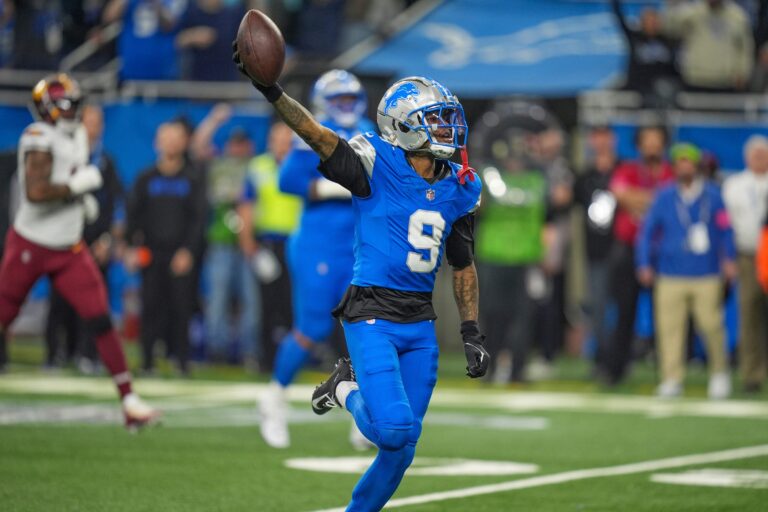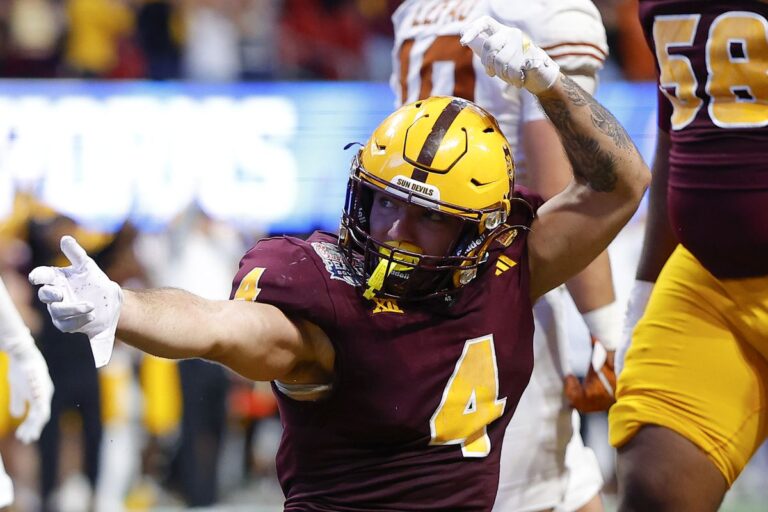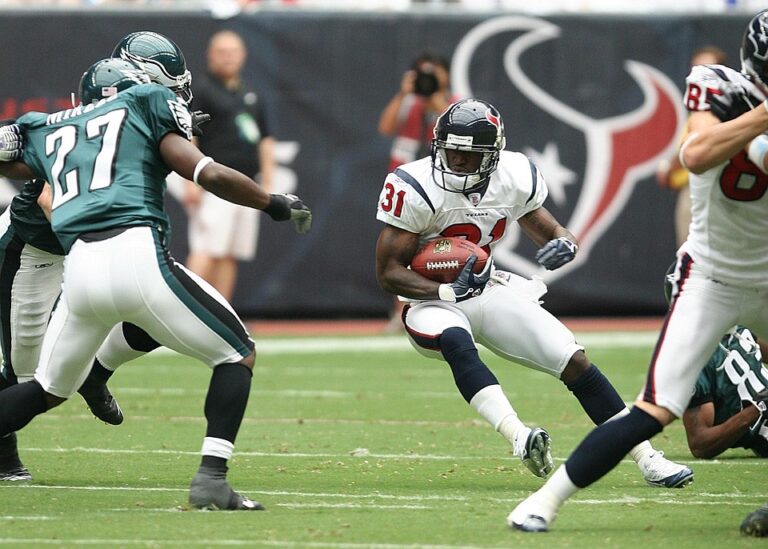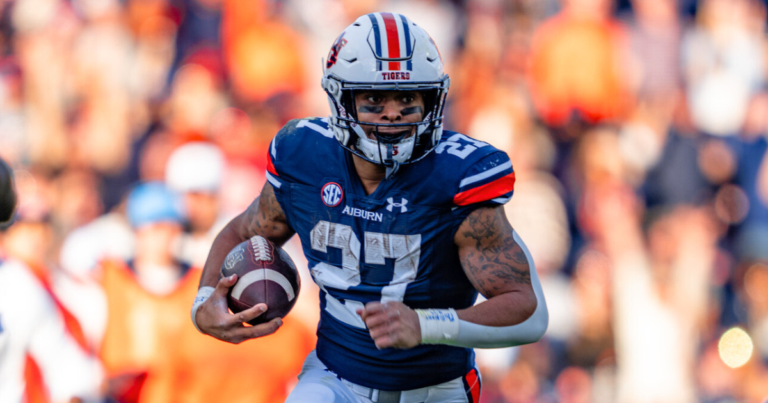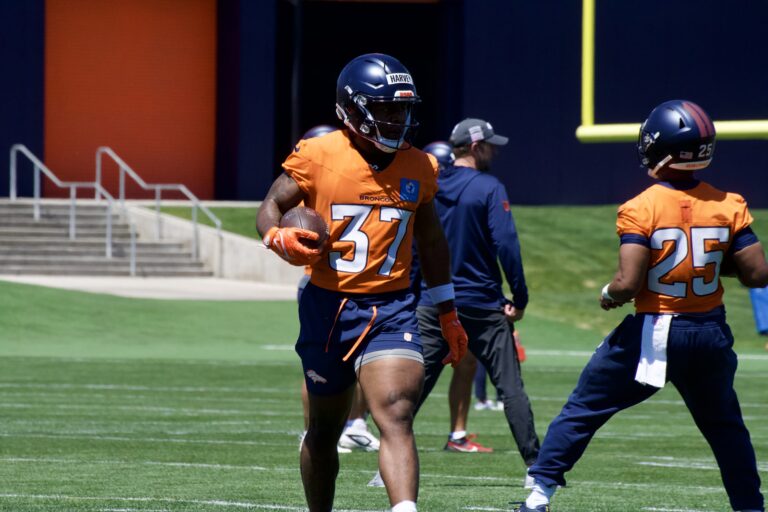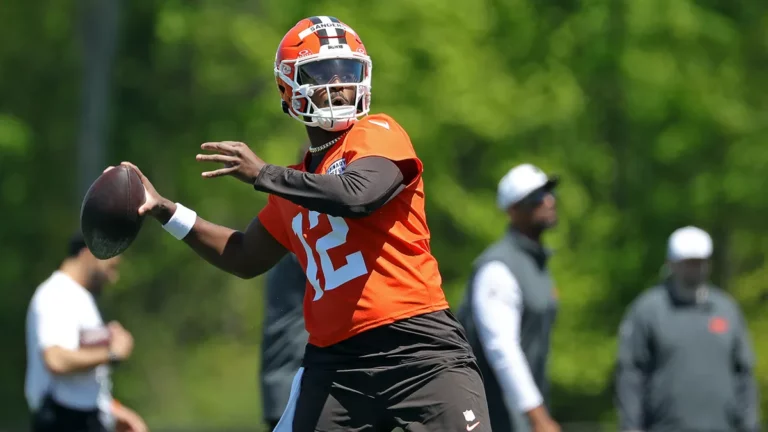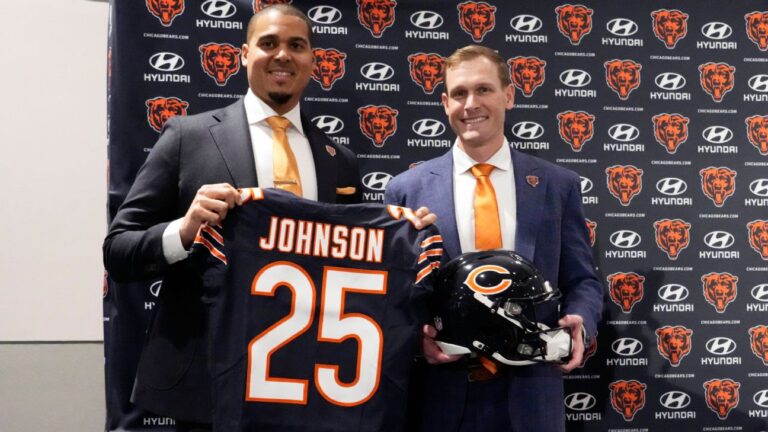Week 1 of the 2020 fantasy football season is finally in the books, and just like a lot of you, I spent the majority of my Sunday night scrolling through lineups and thinking about some of my start/sit decisions from earlier that morning. As nerve-wracking as they are, these last-minute start-sit decisions are both the most crucial and the most challenging moves you will make as a fantasy football owner.
To help with this, I’ve been working on a database this summer that will help summarize different pieces of critical information relating to opportunity, production, and fantasy results into one nice little spreadsheet.
With Week 1 over, my work is just beginning, but I am extremely excited to announce the first-ever edition of The Workload Report!
**DOWNLOAD HERE: The Workload Report – Week 1 2020**
There’s a lot of information in there, but I am going to spend some time breaking it down for you below. As you page through the report, you will see that it’s all the same information, just sorted in a multitude of different ways to help cater to how you like to view and compare players and teams.
This is going to be a living and breathing document, and with only one week worth of data, the report is currently in its simplest form. As we get more data and learn more about team tendencies, this will continue to evolve. If you have any questions about the report or recommendations of what you want to see added in, do not hesitate to reach out to me on Twitter @JonBoyBeats
The Workload Report
The report is broken up into three distinct sections: Opportunity, Production, and Results and the goal is to dive in and find out where these coveted fantasy points are coming from every week for every team. I envision that these categories will stay the same throughout the season, but some of the specific stats may change as I work on fine-tuning this.
OPPORTUNITY
“Snaps” and “Snap %” – Measures how many times a player was on the field that game, and how often they were on the field relative to their team’s offense.
“Targets” and “Target %” – Tracks how many receiving targets that player saw and then compares to their team’s total targets from that week. These numbers remove any plays that ended in QB throwaways.
“Attempts” and “Rush %” – Same thing as above except for rushing attempts.
“Involvement: INV” – The percentage of that player’s snaps that they were targeted or had a rushing attempt.
“Usage: USG” – The percentage of the time that player had a rush attempt or target out of their team’s total rush attempts and targets.
PRODUCTION
Rushing Yards, Receiving Yards, and TDs are easy ones and the associated percentages listed are based on the team’s totals for the week. This accounts for Quarterback rushing yardage.
Air Yards – The total distance that a football is thrown beyond the line of scrimmage to the point of reception. This number also includes incomplete air yards from passes that were off the mark, batted down by a defender, or dropped by the receiver. Air Yards is a critical stat to look at because it helps enlighten us about which receivers had the most opportunity regardless of the outcome for every target. They show which receivers the coaching staff (and/or Quarterback) is trying to feed the ball.
Dominator Rating – Simply put, this a combined statistic to help show the amount of yards and touchdowns that each player is responsible for. Currently, for running backs it is skewed two-thirds towards total yardage and one-third towards touchdowns. For wide receivers and tight ends, it is one-half total yardage, one-sixth Air Yardage, and one-third touchdowns.
RESULTS
PPR and PPR % – This is the amount of fantasy points per reception that each player earned that week and the percentage relative to their team. This does not include quarterback points, so it is only relative to all skill position players.
What can we learn from The Workload Report?
Using the data shown in this report, I am going to be providing rankings every week for RB backfields and WR corps, and TEs, including any important notes that we learned in the past week. Eventually, as we get into the heart of the season, we will be able to see how players are trending compared to their three-week rolling average, which will hopefully help us with some start/sit questions.
For the first three weeks, I am going to spend some time breaking down each position group. I will include my rankings for WR & TE in future weeks, but for Week 1 we are going to start by digging into every team’s rushing backfield.
**DOWNLOAD HERE: The Workload Report – Week 1 2020**
Runaway Bell-cows
1. Christian McCaffrey – It’s kind of funny how a 28.4 PPR week seems like a disappointment for CMC. He only commanded a 12% target share and the Panthers had twice as many passing yards as rushing yards, however, McCaffrey still accounted for 36% of Carolina’s fantasy PPR points. Like clockwork: draft him, start him, reap the benefits.
2. Derrick Henry – The King himself came out and completely dominated in primetime. 31!! carries for 116 yards is definition bell-cow territory. Henry also saw 3 targets, which after only one week would put him on pace to double his career-high for a season. The man didn’t need much receiving opportunity to return insane value this year and after one week it looks like King Henry has the potential to reign supreme.

3. Saquon Barkley – I know that he only gained 6 yards rushing on Monday night and averaged just 0.4 yards per carry. Still, the Pittsburgh defensive line was relentless and Barkley barely had any time to breathe back there. This Steelers defense is looking like an absolute wagon this season, so I am going to wait another couple of weeks before I drop Saquon Barkley from my fantasy teams (only joking). On a night with 39 targets available from Danny “Dimes” Jones, I was excited to see Saquon finish with nine of those for a 23% target share.
4. Ezekiel Elliott – The “Feed Me” tattoo was in full effect on Sunday night for the Cowboys stud tailback. Zeke turned 22 rushing attempts (81 percent rush share) into 96 yards and two TDs, while also adding 31 yards through the air. This helped cool off some of the trepidation that owners in the 1.03 spot were feeling after missing out on CMC/Saquon during the draft and then seeing Kamara/Cook get huge extensions right before the season kicked off. Zeke is going to eat this year, nothing to worry about here folks.
5. Clyde Edwards-Helaire – Not many questions left open about the stud rookie after their Thursday night matchup with the Texans last week. 25 rushing attempts for 138 yards and one touchdown seems pretty good, right? If you factor in that he didn’t catch any passes (we know he can) and got stuffed on the 1-yard line six times (Reid/Bieniemy will scheme this better), the arrow is clearly pointing up.
6. Josh Jacobs – The chalkiest of DFS plays in week 1, Jacobs proved the haters wrong and showed why he was so openly touting himself this offseason. All he did was rack up 93 rushing yards, four catches for 46 yards, and three touchdowns to end the day as the top RB scorer of Week 1 with 35.9 PPR.

7. Chris Carson – Here’s one of the crazier outcomes from week 1, the fact that both the “Let Russ Cook” and “bell-cow Carson” crowds are happy after Seattle’s shootout with the Falcons. I know there was a lot of tilting going on from DK Metcalf & Tyler Lockett owners in the first half when they saw Carson gobble up two quick receiving touchdowns. The Seahawks talented RB produced a remarkably efficient 2020 debut accounting for 24.6 PPR on only 12 touches. It will be interesting to monitor his carry count in the upcoming weeks.
8. David Johnson – Against the Chiefs, Johnson reminded us all of his dual-threat talent, accounting for over 100 yards from scrimmage, three catches, and a touchdown. With Duke Johnson getting injured during the game and his Week 2 status still questionable, DJ firmly supplants his name in the bell-cow tier.
9. James Robinson – Can anyone tell me what the pre-Week 1 odds were on James Robinson having a 70 percent rush share for Jacksonville? Personally, I couldn’t even find the guy in a few of the fantasy apps until just days before the season started. Chris Thompson saw two targets and zero rushing attempts, so this backfield looks like Robinson’s to lose.
10. Todd Gurley – He accounted for 70 percent of Atlanta’s rushing attempts & 80 percent of their rushing yards. This touchdown from inside the five-yard line saved him from having a poor fantasy day. The game script had a lot to do with this, as the Seahawks pace forced Matt Ryan to sling the rock a lot (450 yards worth).
11. Melvin Gordon – This was really a tale of two halves, as Phillip Lindsay out-snapped Gordon 19 to 15 before his injury, however after Lindsay was sidelined Melvin played 22 snaps compared to only six for Royce Freeman. Since turf toe has a way of being a nagging injury, I don’t expect we will see Lindsay for a couple of weeks which is why Melvin has made his way up into this tier. I don’t expect that Freeman will add a lot of value to this team.
Bell-cows Dealing with a 3rd Down/Goal-Line Vulture
12. Dalvin Cook – It’s tough to ignore Alexander Mattison who got half the number of carries that Cook did (6 to 12) but produced the same number of rushing yards as the Vikings workhorse. Cook was saved by two touchdowns; however, we could be talking a very different narrative this week if one of those fell into Mattison’s hands. I am still very high on Cook, but after Week 1, I am worried about his true bell-cow potential.

13. Alvin Kamara – Don’t look now but Latavius Murray outrushed and outgained Kamara on the ground in Week 1. Kamara still commanded a 27% target share and scored two touchdowns so his PPR score is high, but make no mistake Murray will be a vulture this season.
14. Miles Sanders – In the chalkiest of spots on Sunday, Boston Scott failed to produce. Which is why I have Miles Sanders so far up this section of the list. Combining for 15 rushing attempts and only 54 yards, the combination of Scott and Corey Clement left a lot to be desired. Stay tuned for Miles Sanders 2020 explosion, it’s probably coming here soon.
15. Joe Mixon – The Bengals handed it off to Mixon 19 times on Sunday, but he was pretty inefficient and only managed 69 yards. One of the selling points around Mixon this offseason was his projected role in this new passing game headlined by rookie phenom Joe Burrow, however Giovani Bernard out-targetted (5 to 2) and out-gained Mixon (21yds to 2yds) through the air.
16. Austin Ekeler – Before we get too carried away on the Josh Kelley hype train (who looked great), let’s remember that the Chargers only scored 16 points this week and Ekeler only saw 1 target. I know that was one of the concerns preseason was Ekeler’s role in the passing game but I am hard-pressed to believe he is just not going to see targets. Let’s see what happens in a more up-tempo game script before we throw Ekeler into fantasy oblivion. On the other hand, Kelley should be rostered in all leagues and we will quickly see if he has weekly start upside after another game or two.
17. Jonathan Taylor – Is it controversial if I say that Taylor was the most impressive rookie running back from Week 1? I don’t think it is. The season-ending Marlon Mack injury just added a whole 2nd story (and maybe even an attic) to Taylor’s 2020 ceiling. There were question marks about the former Badger’s receiving chops, but after catching six passes for 67 yards those should all be erased moving forward. Maybe the most exciting stat line of the weekend belongs to Indy’s 3rd RB Nyheim Hines who went for 7-28-1 on the ground and 8-45-1 through the air. I honestly think that both Taylor and Hines will be able to be started in PPR formats on a weekly basis. Remember, the checkdown king himself, Phillip Rivers, was able to supply both Gordon & Ekeler with ample opportunity for fantasy success last season.

18. Raheem Mostert – With one game in the books, this looks like Mostert’s job to lose after the Niners fed him a convincing 63% rushing share on Sunday. Tevin Coleman was most likely limited due to his health condition and the air quality in Santa Clara and I’m sure they are still trying to ease Jerrick McKinnon back in (impressive 29 air yards), but Mostert did not disappoint coming out of the gates. Raheem accounted for 37% of the Niners PPR points and with George Kittle hobbled and no timetable yet on Deebo Samuel’s return, San Francisco is going to have to lean on their run game.
19. Aaron Jones – A late touchdown saved what would have been a pretty disappointing day for Aaron Jones on Sunday. Even though 3 other running backs (Jamaal Williams, Tyler Ervin, and AJ Dillon) all saw carries in Week 1, none of them truly separated themselves from the pack against Minnesota. I think you can confidently keep starting Jones while the Packers keep trying to figure out who their change of pace guy will be. Williams walked away with a 15% usage rating (target + touch) and is worth considering as a waiver wire pick up to stash on the end of your bench.
Running Back by Committee (RBBC) w/ Fantasy Potential
20. Kenyan Drake & Chase Edmonds – Drake was viewed as a bell-cow prospect during the preseason, but that opportunity did not shine through in week 1. I think will eventually bump up into the next group, however, Kyler Murray’s 91 rushing yards last week are real and will hamper Drake’s upside.
21. Kareem Hunt & Nick Chubb – Yep, that’s right, I listed Kareem Hunt first here. Nick Chubb owners are in for a nerve-wracking showdown with Cleveland this week as they will likely find out if their stud running back will see enough volume to warrant the late-first/early-second round draft pick they used on him. Meanwhile, Hunt was one of the only bright spots on Sunday for the Browns as he commanded a 50 percent rushing share, 17 percent target share and turned in an eyebrow-raising 12.1 PPR day compared to Chubb’s 7.6 PPR. Popcorn ready for Thursday night.

22. JK Dobbins & Mark Ingram – After cashing in twice in the endzone, it’s clear why the Ravens invested second-round draft capital in Dobbins. Yards and attempts are still very spread out between the two backs. Baltimore’s rushing volume was down (107 total rush yards) compared to last year’s league-leading 206 yards per game, so it will be interesting to see how this trends in their next few matchups.
23. James Conner & Benny Snell – Did anybody else think it was really weird that the announcers didn’t so much as mention James Conner and his injury until about the 4th quarter on Monday night? Something about this situation isn’t sitting well with me. Snell appears to be a priority waiver wire target this week after rushing for 113 yards on 19 carries.
24. Devin Singletary & Zack Moss – Somewhat surprisingly, Josh Allen threw the ball 45 times this week in a game environment that was never really in doubt. The Bills were awarded some extra plays thanks to a couple New York Jet’s turnovers, and still only manufactured 98 rushing yards as a team. Similar to Murray, Josh Allen’s rushing ability (57 yards, 1 TD) will lower the Bills RBs ceilings this season.
25. Malcolm Brown & Cam Akers – Raise your hand if you are confidently shoving Malcolm Brown into your starting lineup in Week 2. I’m not quite there yet either. Brown turned 18 carries into 79 yards and two touchdowns while fellow backfield mate Cam Akers turned 14 carries into only 39 yards. Someone is going to have long-term fantasy relevance in this Rams backfield, but I am willing to keep them both on my bench until we find out.
26. Peyton Barber, Antonio Gibson, JD McKissic – All the Antonio Gibson truthers faced a harsh breath of reality when Payton Barber crossed the end line twice on Sunday. Washington got into an interesting game script in week 1 and frankly not much got me excited from that game, so I think we need to give this backfield another week or two before making too many rash decisions.
27. Ronald Jones & Leonard Fournette – The debut of Tompa Bay was a rough one, thanks largely in part to the Buccaneer’s inefficient rushing attack. The two-headed monster of Jones & Fournette only gained 3.2 yards per carry on a combined 22 rushing attempts. Rojo had a lot more usage than Uncle Lenny, but nothing about either of them really got me excited on Sunday.
Untouchable RBBC until further notice
28. David Montgomery & Tarik Cohen – Chicago asked Mitch Trubisky to pass the ball 36 times against Detroit (slightly above his career avg of 31 attempts/game). However, only five targets went to this backfield duo. That’s not going to get the job done on a team that does not project to score a lot of fantasy points.
29. Adrian Peterson, D’Andre Swift, & Kerryon Johnson – Does anybody else just completely want a restart on the Detroit Lions backfield? After drafting a second-round running back for the second time in three years, they decided to feed the 35-year-old Adrian Peterson who they signed less than two weeks ago. Altogether, the Lions looked pretty bad in Week 1, so I expect that some things will get shaken up. I am staying away from the Detroit backfield until we see more.
30. Sony Michel, James White, Rex Burkhead, JJ Taylor – Here’s how many yards each of the Patriots running backs accounted for (in the order listed): 37yds, 22yds, 32 yds, and 28yds. Meanwhile, Cam Newton picked up 75 yards on the ground and two TDs. The Patriots are trying their best to perfectly define “committee”.

31. Myles Gaskin, Jordan Howard, Matt Breida, Patrick Laird – Thank you to everyone who debated Howard vs Breida in the 7th through 9th rounds all offseason, it turns out none of it mattered and the right answer was neither! It’s going to be a weekly roulette wheel with the Dolphins backfield and I’m going to save my money and spend it somewhere else.
32. Josh Adams, LeVeon Bell, Frank Gore – If you want to start Frank Gore this week, then you might as well go pick up Adrian Peterson off the waivers and throw it back like its 2007. I am interested to hear about the severity of LeVeon Bell’s injury and if it’s bad, then I am very uninterested in this Jets backfield.
